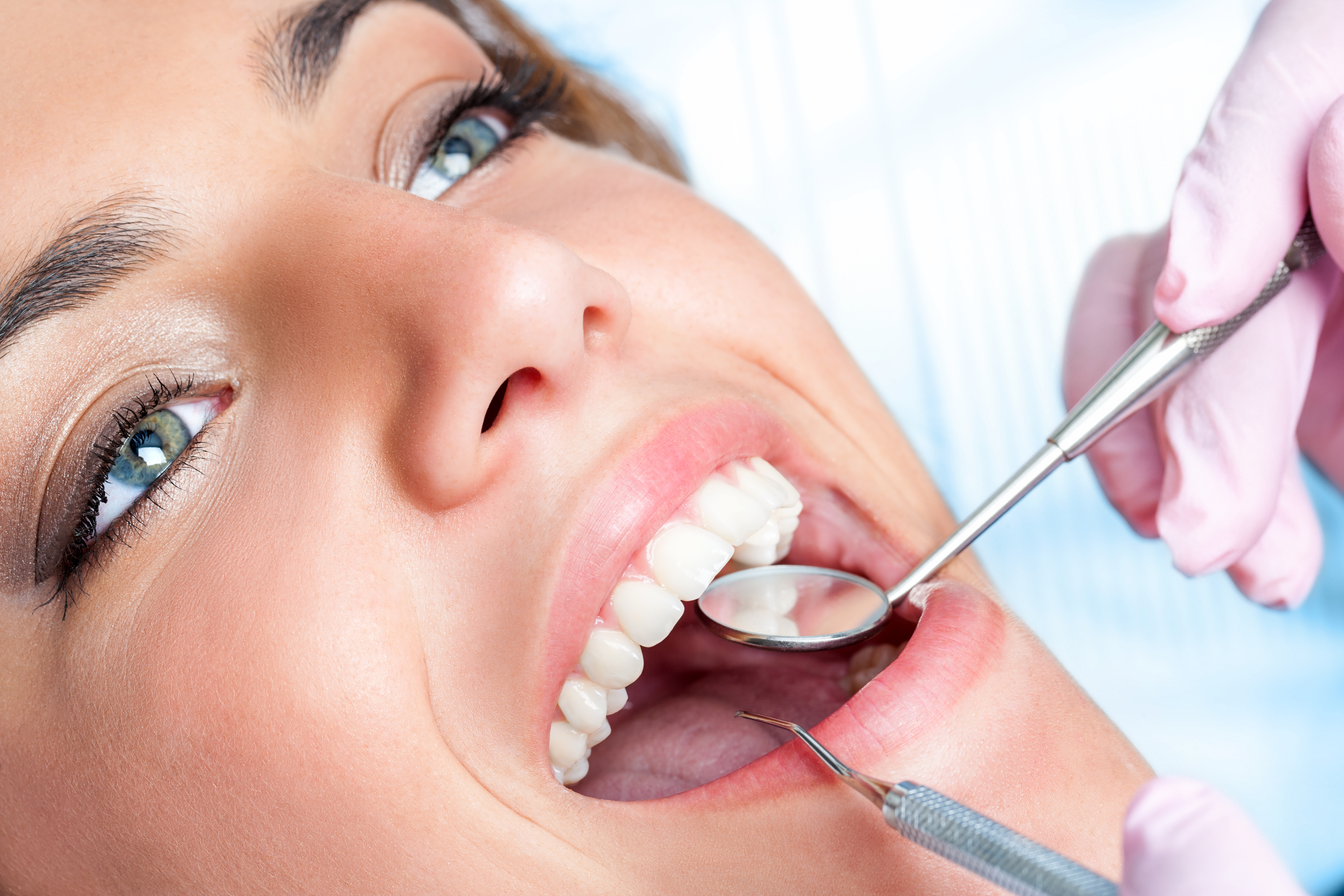
On Broadway Dentistry Services
We provide virtually every dental service available for your oral health. In the event that we feel the procedure you require is outside the of scope of our expertise, we will refer you to a specialist who is better able to meet your needs. After the specialist has completed the recommended treatment for you, our office will be ready to handle your follow-up care.
Cleaning and Prevention

A preventive (recall) program is a joint cooperative effort between you and our team to preserve your natural teeth, gums, and bone of the oral area by preventing the onset, progress, and recurrence of dental diseases and conditions.
Preventing dental disease starts at home with good oral hygiene and a balanced diet. It is continued in our dental office by the efforts of our doctors and the dental hygienists as they promote, restore, and maintain your oral health.
Regular dental exams, cleanings, and x-rays are all part of an effective prevention program. Other great preventive treatments include sealants and fluoride.
Prevention is needed to avoid serious and costly dental problems and is the key to having a healthy, confident, and beautiful smile.
Laser Treatment, Gum and Bone
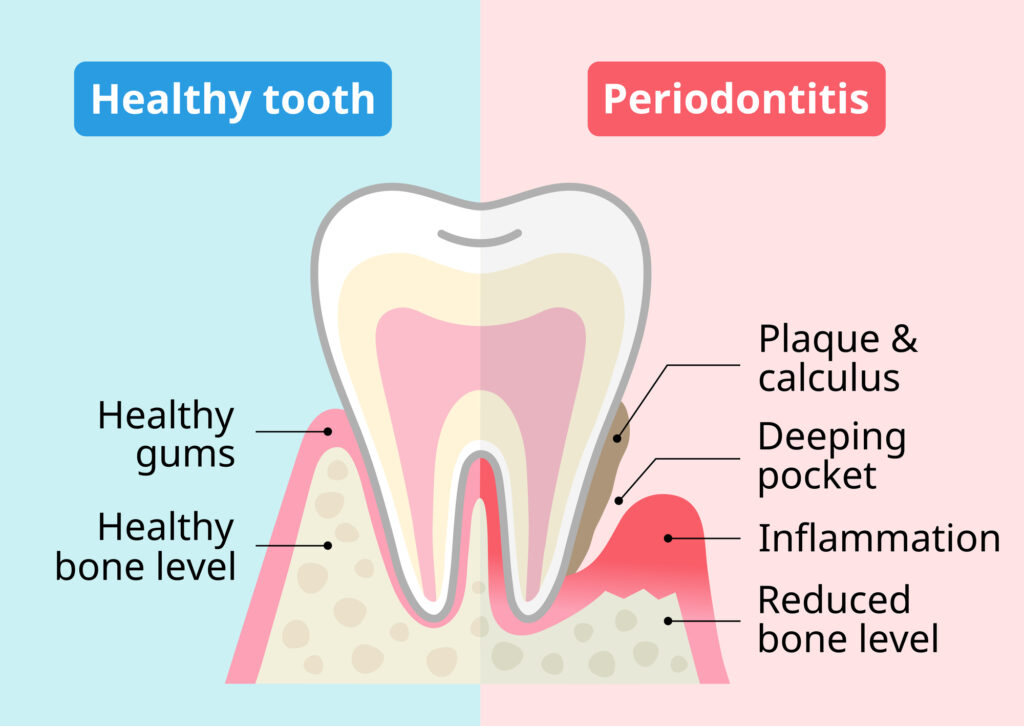
Periodontics is that specialty of dentistry that encompasses the prevention, diagnosis and treatment of diseases of the supporting and surrounding tissues of the teeth. This includes crowns, implants, or other substitutes and the maintenance of the health, function and aesthetics of all of the structures and tissues.
Professional dental cleanings are necessary at least twice each year to maintain good oral health. Many people require a routine cleaning three or four times a year due to buildup of plaque and tartar.
If you have been told you have periodontal (gum) disease, you’re not alone. An estimated 80 percent of American adults currently have some form of the disease.
Periodontal diseases range from simple gum inflammation to serious diseases that result in major damage to the soft tissue and bone that support the teeth. In the worst cases, teeth are lost.
Gum disease is a threat to your oral health. Research also points to possible health effects of periodontal diseases that go well beyond your mouth (more about this later).
Whether it is stopped, slowed, or gets worse depends on how well you care for your teeth and gums every day.
Bridges, Implants & Dentures
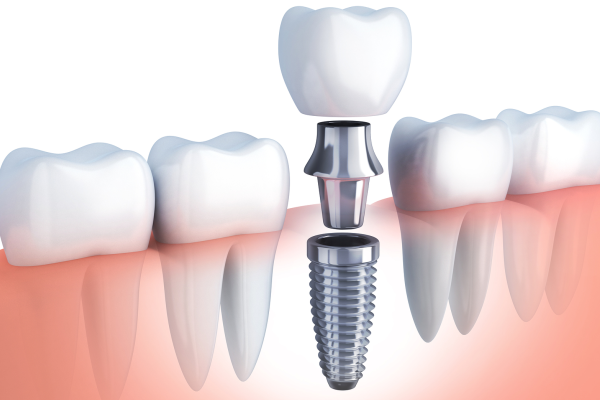
Oral and maxillofacial surgeries are special areas of dentistry concerned with the diagnosis and surgical treatment of congenital or acquired diseases; dysfunction, defects, or injuries of the mouth, jaws, face, neck, and associated regions.
Some of these issues are:
When Teeth Are Lost
When a tooth must be extracted due to trauma, bone loss, or other reasons, implants may be placed in the bone if your dentist determines that you area a good candidate for implants. Please see our tooth fractures page view different types of fractures that occur in teeth.
Impactions
The wisdom teeth, or third molars, are the most frequently impacted teeth due to lack of space in the jaw. In most cases, wisdom teeth that do not erupt into proper alignment should be extracted.
Jaw Alignment
Oral surgery can correct cases where the jaw bones are under- or overdeveloped. Cases where the upper jaw grows either too much or too little and/or the lower jaw grows too much or too little can be surgically corrected and realigned.
TMJ – Temporomandibular Joint
Otherwise known as the TMJ, this joint in front of the ear where the lower jaw pivots is a common problem area. Problems with this joint can cause headache and continuous pain. Lesser cases can be corrected with medication, therapy, and splints. However, more serious cases may require reconstruction of the joint.
Biopsy
When there is a suspicious growth or changed appearance of a section of tissue in the mouth, a biopsy will be performed to determine the origin of the lesion.
Facial Trauma
Oral surgery can help in cases of facial trauma that results from accidents or facial genetic malformation of the jaw and face.
Oral Cancer Screening & Oncology Dental Preparation

Oral Cancer Screening:
Early detection is essential in the fight against oral cancer, significantly improving treatment outcomes. If oral cancer is detected early, the 5-year survival rate is 83%, compared to just 38% if it is discovered later. Various risk factors, such as the consumption of tobacco and alcohol, HPV, age, and genetics, can elevate the risk of developing this type of cancer.
We employ a range of screening techniques to identify potential issues, including visual examinations, palpation, and the use of adjunctive tools like VELscope, Identafi, or OralID to detect abnormal cellular changes. The American Dental Association recommends that all patients over 18 years old receive annual screenings for oral cancer.
Patients should be vigilant for signs such as unusual lumps, lesions, or red or white patches on the tongue, lips, cheeks, palate, or throat. Additionally, screenings can uncover pre-cancerous changes, allowing for early intervention and prevention strategies. Dentists and hygienists are crucial in detecting oral cancer, and their collaboration with medical professionals is vital for proper diagnosis and treatment.
Oncology Preparation:
Conducting a dental evaluation and providing treatment before cancer therapy can decrease the likelihood of oral complications and improve the quality of life for patients.
Our aim is to identify and prevent oral health issues that may occur due to cancer treatment, including dry mouth, oral infections, and tooth loss. A thorough oral evaluation, which encompasses radiographs, periodontal probing, and guidance on oral hygiene, represents effective preventive methods. Approaches such as restorative dentistry, extractions, and oral hygiene practices are critical in preventing oral complications.
For individuals taking bisphosphonates, dental assessments are essential to avert jawbone damage linked to bisphosphonate-induced osteonecrosis. Additionally, dental preparations can help avoid oral complications stemming from radiation, including xerostomia and oral mucositis, as well as lessen the risk of oral infections and tooth loss during chemotherapy.
Pediatric patients receiving cancer treatment require special considerations, particularly in tracking their growth and development. It is vital for dentists, oncologists, and other healthcare professionals to collaborate for optimal oral care and overall wellness.
Educating patients on the importance of oral health during cancer treatment can also lead to improved adherence to treatment regimens and a reduction in complications.
Cosmetic Dentistry & Invisalign
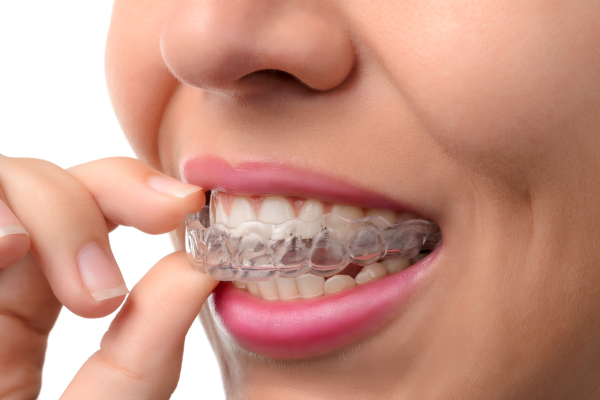
Orthodontic treatment corrects teeth and jaw alignment problems and involves the design and use of appliances such as braces, retainers, aligners, rubber bands, and headgears. If you have crowded or overlapping teeth, it makes them harder to clean which increases your chances of tooth decay, gum disease, and eventual tooth loss. With orthodontic treatment, you can improve the health of your teeth and start to smile with confidence!
Early intervention and treatment is preferred, since the process is usually quicker and easier. Treatment can begin as early as six or seven, which is when some habits that are formed as a baby can begin to cause unwanted tooth movement. Orthodontic treatment is also available for adults, who can be treated with both fixed and removable appliances.
FIllings, Crowns and Extractions
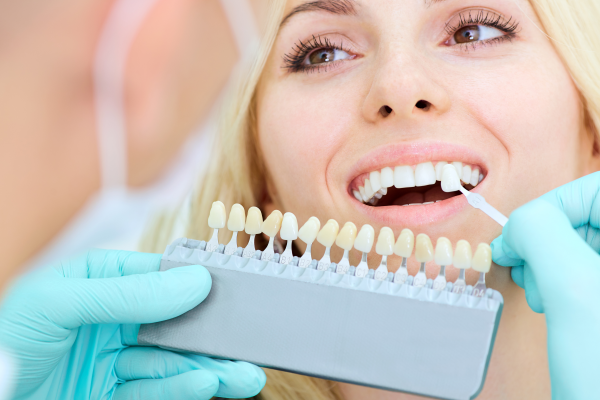
There are many reasons why adult teeth may need restorative treatment. The most common reason is decay, followed by fractured teeth, and old restorations needing replacement. If we recommend that a tooth with a cavity be treated and more than a few weeks pass after the initial diagnosis, the cavity will almost always get bigger and can cause pain. Once this happens, it will likely require more extensive and expensive treatment. The tooth may even have to be removed and replaced with a false (or artificial) tooth. If you have a cavity and it needs a restoration, there are different kinds of materials that may be used to restore the functionality of the tooth. Please remember that a tooth may need treatment before it causes pain. If a tooth causes pain, it may be able to be saved, but the treatment time and cost typically increase due to the complexity of the necessary procedures.
How a Cavity Forms
A cavity is a very small hole that forms on the surface, side, or root of a tooth. Cavities are caused when sugars in the food you eat combine with the bacteria in your mouth. This combination produces a mild acid that eats away at the enamel, the hard outer layer of your tooth. Cavities can occur at any age, but most occur during childhood when dental hygiene may be less thorough. There is a genetic component to dental health, including teeth, gums, and the bone that holds the teeth. No matter how good your genes are, if you don’t take good care of your teeth you may be prone to very serious consequences.
Babies tend to get cavities on the front teeth, especially if they are given a bottle to sleep with. Even milk contains sugar that can harm teeth. This is referred to as baby bottle tooth decay. Children tend to get cavities on the chewing surfaces as well as in-between teeth. Adults can be at risk for both new and recurrent cavities.New cavities tend to form between teeth as well as on the root surfaces. The cavities that form between teeth are typically related to a lack of flossing. Cavities on the root surfaces of teeth generally occur because this area is not covered with enamel and is softer and more prone to cavities. The exposed root may be the result of hard brushing or bone loss related to gum disease. Cavities that reoccur form next to existing restorations such as fillings, crowns, bridges, etc. As restorations get old, the filling material can shrink or wear away, causing the possibility of a small space forming between the tooth and the restoration. This provides a prime area for bacteria to accumulate and breed decay. Click the link to do an experiment with fluoride to see how it helps fight cavities.
Cavities and Restoration Choices
As part of any visit to our office, we check all of your restorations such as crowns, fillings, bridges, veneers, etc. for any sign of decay or old age and we may recommend x-rays so that we can see inside and between your teeth. If we spot any cavities, we will recommend different options for restoring the tooth to full function. If the cavity is in the very early stages, we may decide to keep an eye on it and recommend a home fluoride rinse to help the tooth fight the cavity and possibly prevent the need for a restoration.
Root Canal Therapy
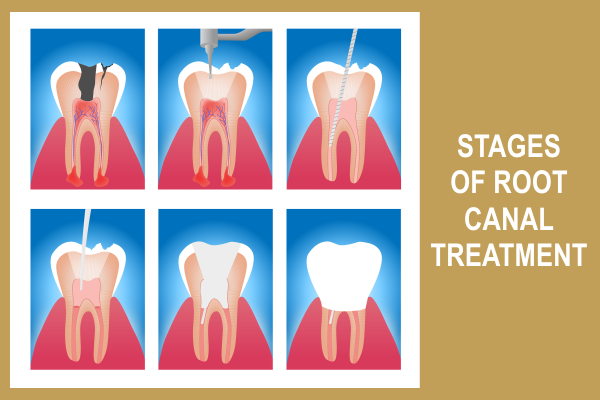
Endodontics (Root Canal Therapy)
The term endodontic is a combination of the Greek words endo, which means “inside” and odont, which means “tooth.” Endodontic treatment involves treating the inside of the tooth and is also referred to as root canal therapy because it is focused on the root part of the tooth, specifically in the canal portion of the root where the nerve, blood vessels, and connective tissue of the tooth reside.
Inside of a tooth, under the white enamel and a layer called the dentin, is soft tissue called the pulp. The pulp contains blood vessels, nerves, and connective tissue and creates the surrounding hard tissue of the tooth during development.
The pulp extends from the crown of the tooth to the tip of the roots where it connects to the tissues surrounding the root. The pulp is very important during a tooth’s growth and development. However, once a tooth is fully mature, it can survive without the pulp because the tooth continues to be nourished by the tissue surrounding it.
Why Endodontic Treatment is Necessary
Decaying tooth: Root canal therapy is necessary when the pulp becomes inflamed or infected. The inflammation or infection can have a variety of causes: deep decay due to bacteria, multiple dental procedures on the tooth, or a crack or chip in the tooth. In addition, trauma to a tooth may cause pulp damage even if the tooth has no visible chips or cracks. If pulp inflammation or infection is left untreated, it can cause pain, and/or lead to an abscess.
Signs of pulp damage may include pain, prolonged sensitivity to heat or cold, discoloration of the tooth, and swelling and tenderness in the nearby gums. Sometimes there are no symptoms at all.
Treating the Tooth
Root canal treatment: A traditional root canal involves removing the inflamed or infected pulp, carefully cleaning and shaping the canals inside of the tooth, then filling and sealing the space inside the canal. A crown holds the tooth together and reduces the likelihood of the tooth fracturing in the future. Back teeth often need crowns since a great amount of tooth structure may be lost from decay, which makes them more susceptible to fracture. Front teeth occasionally need crowns and are restored with a crown on a case-by-case basis.
Root Canal Procedures Explained
Endodontic treatment can often be performed in one or two visits, depending upon the source of the problem and the complexity of the tooth. The first step is to examine, test, and x-ray the tooth. The area is then numbed with local anesthetic to reduce or eliminate pain. Next, a rubber dam is placed to isolate the tooth from the rest of the oral cavity, creating a barrier to prevent bacteria and saliva from entering the tooth during the procedure. We then use a handpiece to open access into the pulp chamber and root canals. Very small instruments are used to clean and shape the pulp chamber and root canals to remove the nerve, blood vessels and connective tissue, and to prepare the canals for the root canal filling material.
Filling the Canals
After the space is cleaned and shaped, we fill the root canals with a biocompatible material which is placed with an adhesive cement to ensure the complete sealing of the root canals. The goal of the filling material is to create a barrier so that no cells, fluids, or other matter enters the tooth at the tip of the root. In some cases, a temporary filling is placed to prevent anything from entering the tooth from your mouth. It is important that this temporary is replaced by a final restoration in a short amount of time as it is not meant for long term wear.
Restoring the Tooth
Root canal tooth restoration: If the tooth lacks sufficient structure to hold a restoration after the root canal, a core build-up or post will need to be added inside of the tooth. This provides a solid foundation for a crown and fills the hollow space that was created to access the pulp and canals of the tooth. A crown or other restoration is then placed on the tooth to protect and restore it to its full function.
Whitening and Bleaching
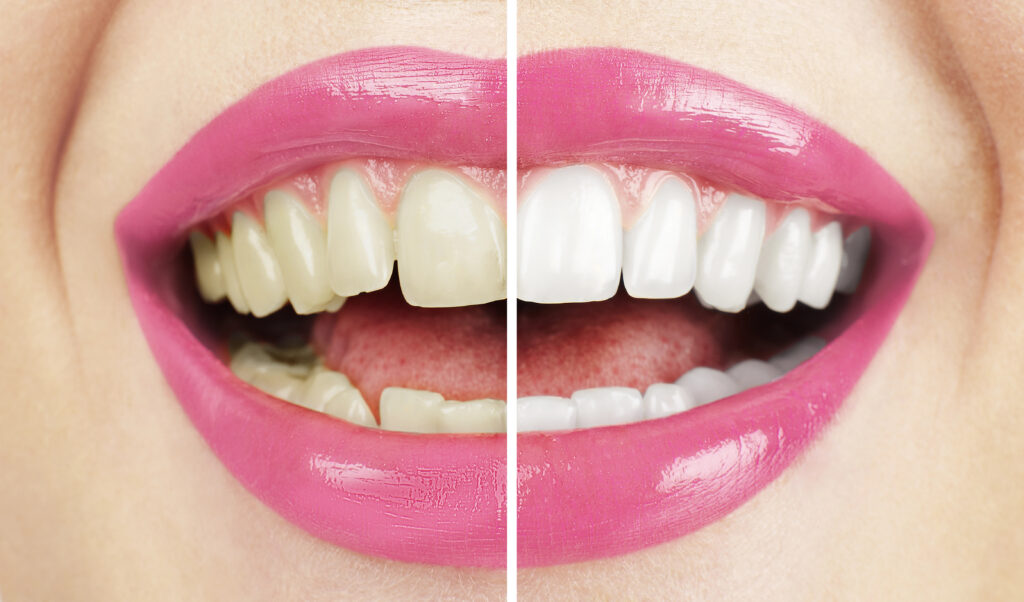
Discover the secret to a radiant smile that turns heads! Transform your confidence with a brighter, whiter set of teeth.
Learn how professional teeth whitening can remove stains and discoloration caused by coffee, tea, or smoking. Explore the benefits of both in-office treatments with at-home whitening kits tailored to your needs.
Imagine the compliments you’ll receive with a dazzling smile, enhancing both your personal and professional life. Picture yourself smiling freely in photographs without worrying about yellowing teeth.
Contact us to book your teeth whitening appointment and take the first step towards your dream smile!
On Broadway Dentistry
4435 E. Broadway Road, Suite #9
Mesa, Arizona 85206
South-East Corner of Broadway Road, near Greenfield Road.

